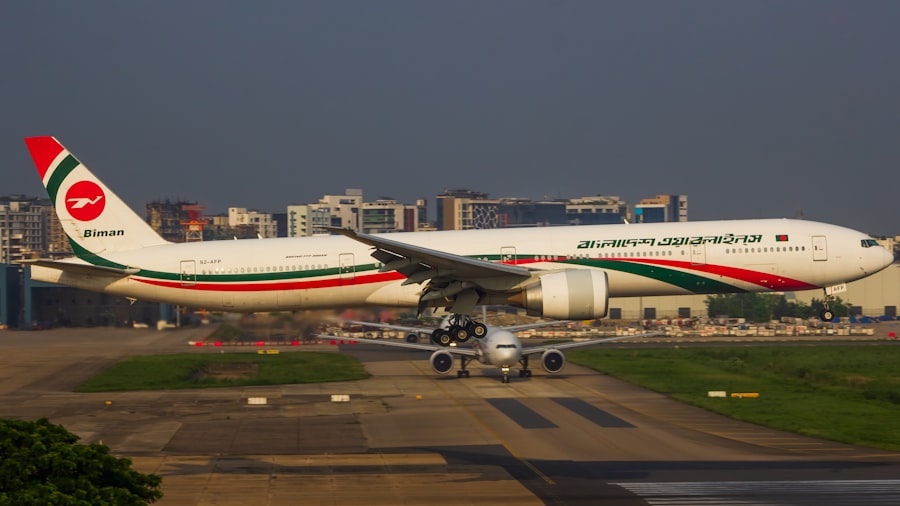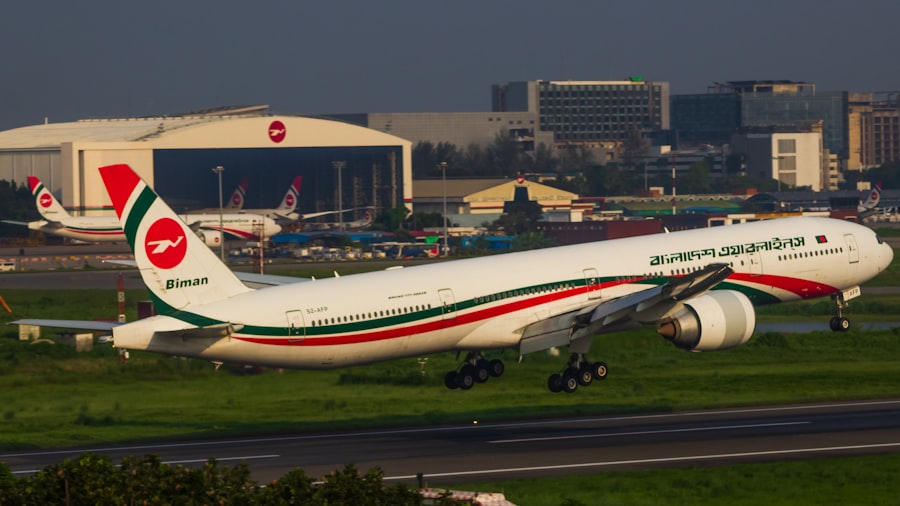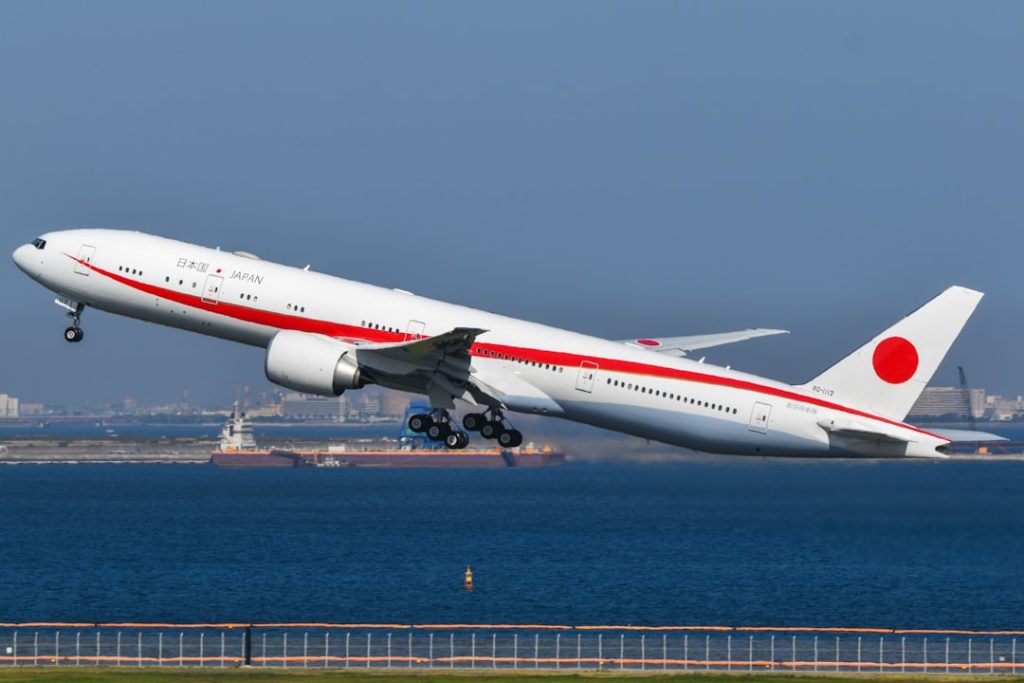The Boeing 777-300ER, an extended-range variant of the 777 family, has become a cornerstone of long-haul aviation since its introduction in 2004. This aircraft is renowned for its impressive range, capacity, and operational efficiency, making it a preferred choice for airlines around the globe. With a seating capacity that can accommodate up to 550 passengers in a high-density configuration, the 777-300ER is designed to meet the demands of both passenger and cargo transport.
Its introduction marked a significant advancement in commercial aviation, combining cutting-edge technology with a design that prioritizes passenger comfort and operational performance. The 777-300ER is powered by two General Electric GE90 engines, which are among the most powerful jet engines in the world. This aircraft not only boasts an impressive range of approximately 7,370 nautical miles but also features advanced aerodynamics that contribute to its fuel efficiency.
The combination of these elements has allowed airlines to operate longer routes with fewer stops, thereby enhancing connectivity between major global hubs. As a result, the Boeing 777-300ER has established itself as a vital asset for airlines seeking to optimize their long-haul operations while providing passengers with a comfortable flying experience.
Key Takeaways
- The Boeing 777 300ER is a long-range, wide-body, twin-engine jet airliner known for its efficiency and performance.
- The design and features of the Boeing 777 300ER include a spacious cabin, advanced aerodynamics, and a range of up to 7,370 nautical miles.
- The Boeing 777 300ER is highly efficient, with advanced engines and aerodynamics that contribute to its fuel efficiency and reduced environmental impact.
- The cabin and interior of the Boeing 777 300ER are designed for passenger comfort, with spacious seating, advanced in-flight entertainment, and customizable lighting.
- The Boeing 777 300ER incorporates advanced technology and innovation, including fly-by-wire controls, advanced avionics, and composite materials for weight reduction.
Design and Features of the Boeing 777 300ER
The design of the Boeing 777-300ER is characterized by its sleek fuselage and distinctive wing shape, which are engineered to enhance aerodynamic performance. The aircraft features a wingspan of 199 feet and 11 inches, equipped with raked wingtips that improve fuel efficiency by reducing drag during flight. The overall structure is constructed using advanced materials, including aluminum alloys and composite materials, which contribute to weight reduction without compromising strength or safety.
This innovative design allows the aircraft to achieve optimal performance while maintaining structural integrity over long distances. In terms of features, the Boeing 777-300ER is equipped with state-of-the-art systems that enhance both pilot control and passenger comfort. The flight deck incorporates advanced avionics and fly-by-wire technology, providing pilots with precise control and improved situational awareness.
Additionally, the aircraft’s cabin is designed with larger windows that allow more natural light to enter, creating a more pleasant environment for passengers. The overhead storage bins are also larger than those found in previous models, accommodating more carry-on luggage and enhancing the overall travel experience.
Performance and Efficiency of the Boeing 777 300ER

Performance metrics for the Boeing 777-300ER are impressive, particularly when considering its role as a long-haul aircraft. The GE90 engines provide a thrust rating of up to 115,300 pounds each, enabling the aircraft to take off from shorter runways while carrying substantial payloads. This capability is particularly advantageous for airlines operating in regions with limited airport infrastructure or during peak travel seasons when demand surges.
The aircraft’s maximum takeoff weight (MTOW) is approximately 775,000 pounds, allowing it to carry significant amounts of cargo alongside passengers. Fuel efficiency is another hallmark of the Boeing 777-300ER’s performance profile. The aircraft’s design incorporates advanced aerodynamics and engine technology that contribute to a reduction in fuel consumption compared to earlier models.
According to Boeing, the 777-300ER consumes approximately 20% less fuel per seat than its predecessor, the 747-400. This efficiency not only translates into cost savings for airlines but also aligns with growing environmental concerns regarding carbon emissions in aviation. As airlines increasingly prioritize sustainability, the operational efficiency of the 777-300ER positions it as a favorable option in their fleets.
Cabin and Interior of the Boeing 777 300ER
| Aspect | Details |
|---|---|
| Cabin Configuration | 3-class configuration: First, Business, and Economy |
| Seating Capacity | 396 passengers in a typical 3-class configuration |
| Seat Pitch | 32-34 inches in Economy, 78-82 inches in Business, and 84-89 inches in First |
| Entertainment System | Personal seat-back screens with on-demand movies, TV shows, and games |
| Interior Lighting | LED lighting with customizable color schemes for different phases of flight |
| Wi-Fi | Available for passengers throughout the cabin |
The cabin interior of the Boeing 777-300ER is designed with passenger comfort as a top priority. Airlines have the flexibility to configure the seating arrangements according to their service models, ranging from high-density economy layouts to luxurious first-class suites. Typically, the aircraft features three main classes: first class, business class, and economy class.
In business class, passengers often enjoy lie-flat seats that provide a restful experience on long-haul flights, while first-class cabins may include private suites with sliding doors for enhanced privacy. In addition to seating arrangements, the cabin is equipped with modern amenities that enhance the overall travel experience. Many airlines have integrated advanced in-flight entertainment systems that offer a wide selection of movies, television shows, and music options accessible through personal screens at each seat.
Furthermore, mood lighting systems are employed to create a calming atmosphere during different phases of flight, helping to reduce jet lag for passengers traveling across multiple time zones. The overall design ethos emphasizes not only functionality but also aesthetics, ensuring that travelers enjoy a pleasant environment throughout their journey.
Technology and Innovation in the Boeing 777 300ER
The Boeing 777-300ER stands at the forefront of technological innovation in commercial aviation. One of its most notable advancements is the incorporation of fly-by-wire technology, which replaces traditional mechanical flight controls with electronic systems. This transition enhances precision in handling and allows for more sophisticated autopilot functions.
The aircraft’s flight management system (FMS) is also highly advanced, enabling optimized routing and fuel management during flights. Moreover, the GE90 engines are equipped with advanced materials and designs that contribute to their efficiency and reliability. For instance, the use of composite fan blades reduces weight while maintaining strength under high-stress conditions.
Additionally, these engines feature noise-reducing technologies that help minimize sound pollution around airports, addressing community concerns regarding aircraft noise. The integration of such technologies not only improves operational performance but also aligns with industry trends toward sustainability and environmental responsibility.
Safety and Reliability of the Boeing 777 300ER

Safety is paramount in aviation, and the Boeing 777-300ER has an exemplary safety record since its introduction. The aircraft is designed with multiple redundant systems that ensure continued operation even in the event of a failure in one component. For instance, it features dual hydraulic systems that control critical flight surfaces and landing gear operations.
This redundancy extends to its electrical systems as well, where backup power sources are available to maintain essential functions during emergencies. The reliability of the Boeing 777-300ER is further underscored by its maintenance protocols and operational history. Airlines operating this model benefit from extensive support from Boeing in terms of maintenance training and parts availability.
The aircraft’s design allows for easier access to critical components during maintenance checks, reducing downtime and ensuring that airlines can keep their fleets operational without excessive delays. This reliability has made the 777-300ER a favorite among operators who prioritize safety and efficiency in their long-haul operations.
Airlines and Routes Utilizing the Boeing 777 300ER
Numerous airlines around the world have incorporated the Boeing 777-300ER into their fleets due to its versatility and performance capabilities. Major carriers such as Emirates, Qatar Airways, and Singapore Airlines have deployed this aircraft on some of their longest routes, connecting cities like Dubai to Los Angeles or Singapore to New York City. These airlines have configured their cabins to offer varying levels of service, catering to different market segments while maximizing revenue potential on high-demand routes.
The operational flexibility of the Boeing 777-300ER allows airlines to serve both high-density routes and those requiring premium services. For example, airlines may choose to operate this aircraft on routes with significant business travel demand or leisure destinations where passenger volume is expected to be high during peak seasons. The ability to adjust seating configurations based on route demand further enhances its appeal as an asset in an airline’s fleet strategy.
Future of the Boeing 777 300ER
As aviation continues to evolve in response to changing market dynamics and environmental considerations, the future of the Boeing 777-300ER remains promising despite emerging competition from newer models like the Boeing 787 Dreamliner and Airbus A350. While these newer aircraft offer advanced technologies and improved fuel efficiency, many airlines still find value in maintaining their existing fleets of 777-300ERs due to their proven reliability and performance. Looking ahead, there may be opportunities for retrofitting existing Boeing 777-300ERs with updated technologies such as more efficient engines or enhanced cabin features to extend their operational life further.
Additionally, as airlines increasingly focus on sustainability initiatives, there may be advancements in biofuels or hybrid technologies that could be integrated into existing fleets to reduce carbon footprints without necessitating complete fleet overhauls. The adaptability of the Boeing 777-300ER positions it well within an industry that is continuously seeking innovation while balancing operational efficiency with environmental responsibility.


